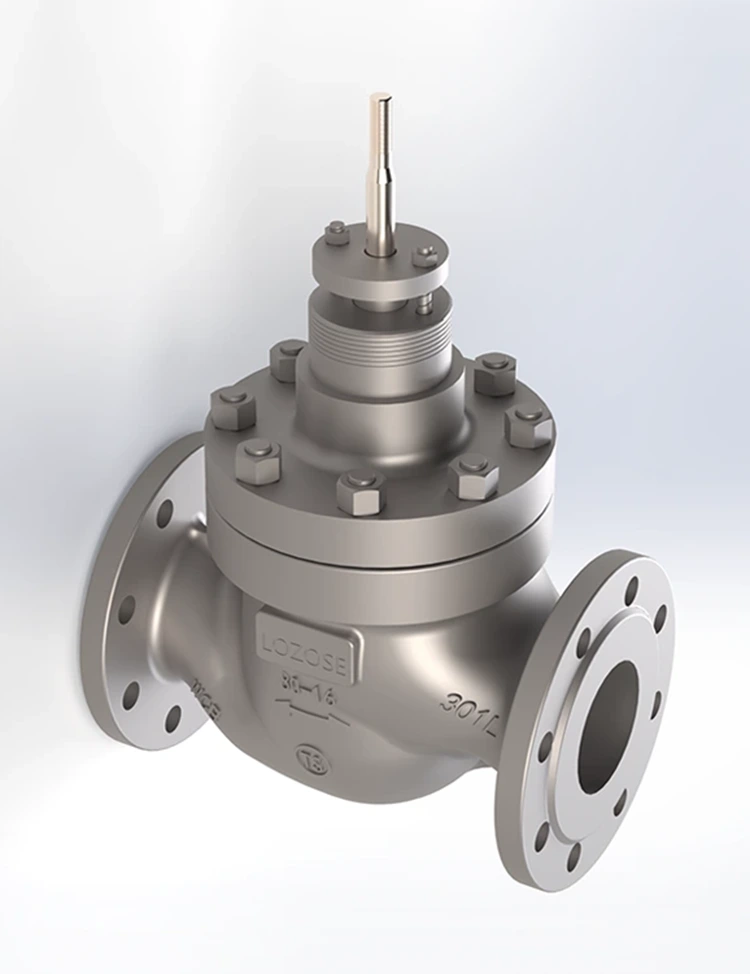Key Selection Criteria for Conventional Series Control Valves:
2025-08-15
Control valves are critical components in process industries, and selecting the right conventional series control valve ensures optimal system performance. This guide from LOZOSE covers essential selection criteria, technical specifications, application considerations, and maintenance best practices for conventional series control valves, helping you make informed decisions for your fluid control systems.
1. Understanding Conventional Series Control Valve Fundamentals
Conventional series control valves regulate flow by varying the size of the flow passage as directed by a signal from a controller. LOZOSE valves feature:
Key Operating Principles:
-
Linear, equal percentage, and quick opening flow characteristics
-
Pneumatic, electric, or hydraulic actuation options
-
Balanced and unbalanced plug designs
-
ANSI Class 150 to 2500 pressure ratings
Primary Components:
-
Valve body (cast steel, stainless steel, alloy options)
-
Trim (plug, seat, stem)
-
Actuator (spring-diaphragm, piston, rotary)
-
Positioner (pneumatic, electro-pneumatic, digital)
2. Technical Specifications and Performance Data
LOZOSE conventional series control valves are available in multiple configurations to meet diverse industrial requirements:
| Model | Size Range | Pressure Rating | Temperature Range | Flow Coefficient (Cv) | Body Material |
|---|---|---|---|---|---|
| LZ-CV100 | 1/2"-4" | ANSI 150-600 | -20°C to 250°C | 5-120 | WCB, CF8M |
| LZ-CV200 | 2"-12" | ANSI 150-900 | -40°C to 400°C | 30-450 | WC6, CF8 |
| LZ-CV300 | 6"-24" | ANSI 150-2500 | -50°C to 550°C | 200-2000 | C12A, Alloy 20 |
Performance Features:
-
Leakage Class: ANSI IV to VI
-
Flow Characteristics: Linear, EQ%, Quick Open
-
End Connections: Flanged, Socket Weld, Threaded
-
Actuator Options: Spring-return, double-acting
-
Positioner Accuracy: ±1% of span
3. Application-Specific Selection Guidelines
Process Industry Requirements
| Industry | Valve Type | Special Features |
|---|---|---|
| Oil & Gas | High-Pressure | Anti-cavitation trim |
| Chemical | Corrosion-Resistant | Alloy materials |
| Power | High-Temperature | Extended bonnet |
| Water | General Service | EPDM seals |
Fluid Characteristics Considerations
-
Liquids: Consider cavitation and flashing
-
Gases: Account for compressibility
-
Slurries: Require hardened trim
-
High-Temp: Need extended bonnets
Selection Process:
-
Determine process conditions (flow, pressure, temperature)
-
Select appropriate valve size and Cv
-
Choose compatible materials
-
Specify actuation method
-
Select accessories (positioner, limit switches)
4. Installation and Maintenance Best Practices
Installation Requirements
✔ Proper piping alignment (no strain on valve)
✔ Adequate access for maintenance
✔ Correct gasket selection
✔ Proper actuator orientation
✔ Sufficient clearance for stem movement
Maintenance Schedule
| Task | Frequency | Tools Required |
|---|---|---|
| Packing Adjustment | Quarterly | Torque wrench |
| Actuator Inspection | Monthly | Multimeter |
| Full Performance Test | Annually | Calibration kit |
| Internal Inspection | Biannually | Valve wrench |
Why Choose LOZOSE Conventional Series Control Valves?
✔ 30+ years of valve manufacturing expertise
✔ Custom-engineered solutions
✔ Full range of certifications (API, CE, SIL)
✔ Global technical support network
✔ 5-year warranty on standard products
Contact Our Valve Specialists Today:
📧 Email: [email protected]
As LOZOSE's Chief Engineer with 25 years in control valve technology, I guarantee our conventional series control valves deliver precise, reliable performance in the most demanding applications. Let our team help you select the perfect valve solution for your specific needs.



